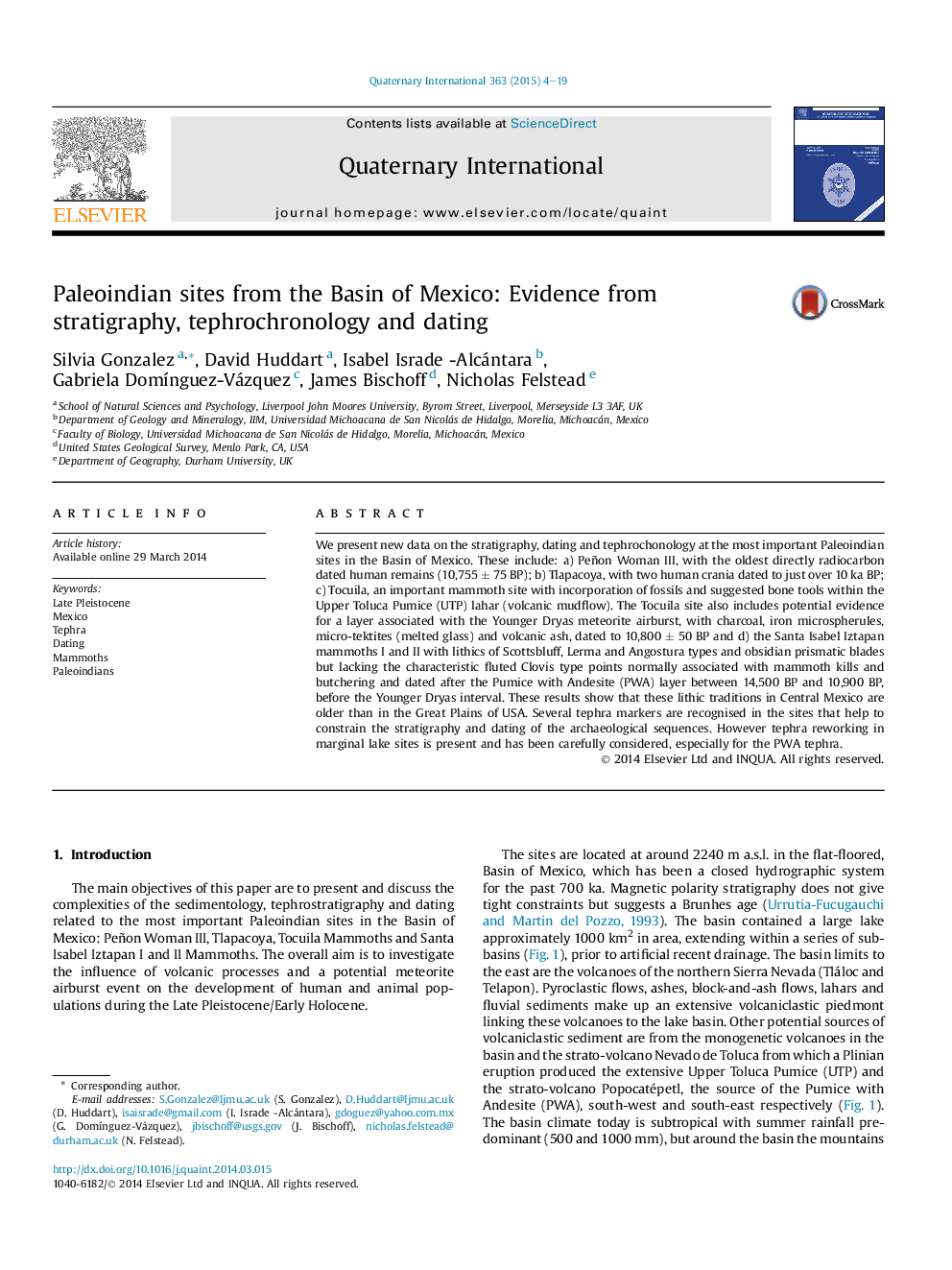| کد مقاله | کد نشریه | سال انتشار | مقاله انگلیسی | نسخه تمام متن |
|---|---|---|---|---|
| 1040951 | 1484134 | 2015 | 16 صفحه PDF | دانلود رایگان |
We present new data on the stratigraphy, dating and tephrochonology at the most important Paleoindian sites in the Basin of Mexico. These include: a) Peñon Woman III, with the oldest directly radiocarbon dated human remains (10,755 ± 75 BP); b) Tlapacoya, with two human crania dated to just over 10 ka BP; c) Tocuila, an important mammoth site with incorporation of fossils and suggested bone tools within the Upper Toluca Pumice (UTP) lahar (volcanic mudflow). The Tocuila site also includes potential evidence for a layer associated with the Younger Dryas meteorite airburst, with charcoal, iron microspherules, micro-tektites (melted glass) and volcanic ash, dated to 10,800 ± 50 BP and d) the Santa Isabel Iztapan mammoths I and II with lithics of Scottsbluff, Lerma and Angostura types and obsidian prismatic blades but lacking the characteristic fluted Clovis type points normally associated with mammoth kills and butchering and dated after the Pumice with Andesite (PWA) layer between 14,500 BP and 10,900 BP, before the Younger Dryas interval. These results show that these lithic traditions in Central Mexico are older than in the Great Plains of USA. Several tephra markers are recognised in the sites that help to constrain the stratigraphy and dating of the archaeological sequences. However tephra reworking in marginal lake sites is present and has been carefully considered, especially for the PWA tephra.
Journal: Quaternary International - Volume 363, 30 March 2015, Pages 4–19
